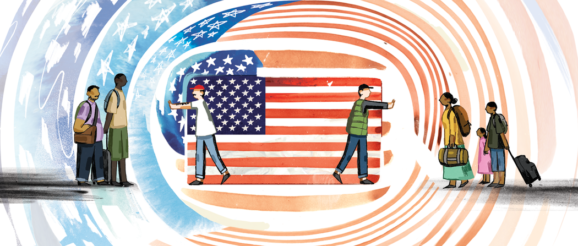Sharp Cuts in Immigration Threaten U.S. Economy and Innovation – The New York Times

Without sustained immigration, economic growth will be notably slower. Moody Analytics analyzed the data and estimated that if annual United States immigration stayed at only 200,000 rather than a more normal one million, gross domestic product would be $1 trillion lower a decade from now.
In addition, lower immigration portends big problems because the basic American retirement system — Social Security and Medicare — relies on workers to pay for retirees, and the entire expansion of the work force over the next 15 years will come from immigration. Lower immigration rates will mean serious funding shortfalls for older Americans.
The final reason the low immigration number is so frightening is not really about population growth at all. It’s that the evidence increasingly says having immigrants here makes workers born in the United States more successful.
That’s partly because immigrants start companies at twice the rate of native Americans. Almost half the companies in the Fortune 500 were started by immigrants or their children, and without them, jobs are likely to be scarcer in the future.
Also, as the American economy becomes more dominated by knowledge work, immigration restrictions are likely to have an increasingly severe impact. In recent research, the New York University economists Petra Moser and Shmuel San examined the economic effects of the national quota system of the 1920s. That was the last time the United States engaged in mass immigration restrictions based on ethnicity.
These laws of the 1920s were designed to block the entry of immigrants from Southern and Eastern Europe and from Asia in order to preserve the ethnic “character” of the United States. With these laws, immigration fell below 300,000 in 1925, from more than 800,000 in 1921, according to the Migration Policy Institute. Quotas remained until the 1960s, and the United States did not return to 1921 immigrant levels until 1989.
Professor Moser and Professor San have found that those quotas seriously curtailed immigration of scientists and inventors of specific ethnicities (Jews from Eastern Europe, for example). The scholars gathered biographical information on 82,000 scientists and inventors in the United States from 1921 to 1956, including details on their areas of specialty, the number of patents they received and their places of birth. They wanted to know how excluding immigrants affected American-born scientists and inventors.
